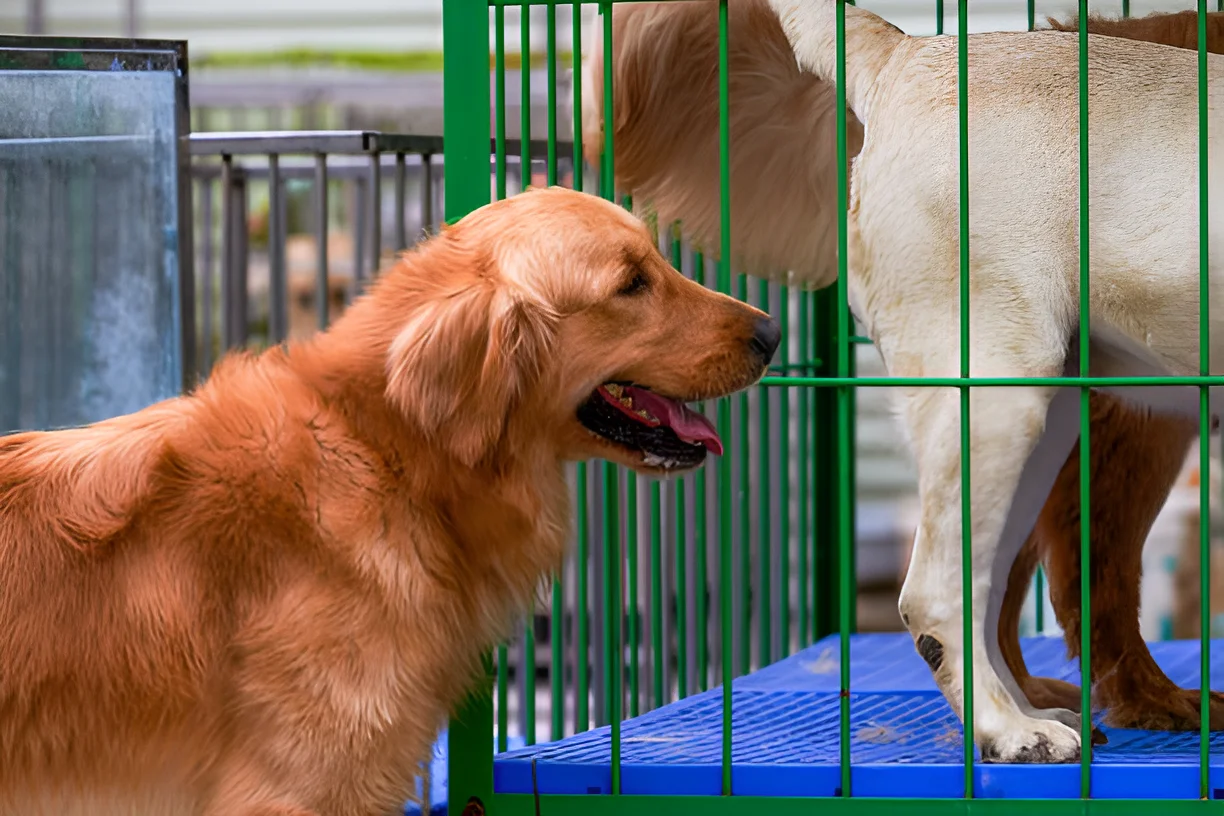Your Golden Retriever may hate the crate due to anxiety, negative past experiences, or improper crate training. Understanding the reasons behind this aversion and addressing them with patience and positive reinforcement can help your dog feel more comfortable and secure.
Golden Retrievers are known for their friendly and affectionate nature, making them one of the most popular dog breeds. However, despite their generally easygoing temperament, some Golden Retrievers may develop a strong dislike for their crate. This can be frustrating for owners who rely on crates for training, travel, or providing a safe space for their pets. This comprehensive guide will explore the reasons why your Golden Retriever might hate the crate, how to address these issues, and tips for successful crate training.
Understanding Crate Aversion
Common Reasons for Crate Aversion
Several factors can contribute to a Golden Retriever’s dislike of the crate:
- Anxiety: Crate anxiety is a common issue that can stem from a variety of sources, including separation anxiety, fear of confinement, or past negative experiences.
- Negative Associations: If your dog has had negative experiences with the crate, such as being confined for long periods or using the crate as punishment, they may develop a strong aversion to it.
- Improper Crate Training: Rushing the crate training process or not using positive reinforcement can lead to a negative perception of the crate.
- Discomfort: An uncomfortable crate, whether due to improper sizing, lack of bedding, or poor ventilation, can make your dog reluctant to use it.
Addressing Crate Anxiety
Gradual Introduction
Introducing the crate gradually can help your Golden Retriever become more comfortable with it:
- Open Door Policy: Start by leaving the crate door open and placing treats or toys inside to entice your dog to explore it voluntarily. Allow them to enter and exit the crate freely without any pressure.
- Short Sessions: Begin with short crate sessions while you are present. Gradually increase the duration as your dog becomes more comfortable.
Positive Reinforcement
Using positive reinforcement can help your dog associate the crate with positive experiences:
- Treats and Praise: Reward your dog with treats, praise, or a favorite toy when they willingly enter or spend time in the crate.
- Comfort Items: Place familiar and comforting items, such as your dog’s favorite toys or a piece of your clothing, inside the crate to make it more inviting.
Creating a Comfortable Space
Ensuring the crate is a comfortable and inviting space can make a significant difference:
- Proper Sizing: Choose a crate that is appropriately sized for your Golden Retriever. They should be able to stand, turn around, and lie down comfortably.
- Bedding: Use soft bedding, blankets, or familiar items with your dog’s scent to make the crate cozy and reassuring.
- Ventilation: Ensure the crate has adequate ventilation to keep your dog comfortable.
Overcoming Negative Associations
Rebuilding Trust
If your dog has had negative experiences with the crate, rebuilding trust is essential:
- Avoid Punishment: Never use the crate as a form of punishment. This can create a negative association and increase your dog’s aversion to the crate.
- Positive Experiences: Create positive experiences around the crate by feeding your dog near it, playing games that involve the crate, and rewarding them for calm behavior around the crate.
Consistency and Patience
Consistency and patience are key to overcoming negative associations:
- Routine: Establish a consistent routine for crate time, making it a regular part of your dog’s day.
- Patience: Be patient and give your dog time to adjust. Forcing them into the crate or rushing the process can backfire and increase their anxiety.
Effective Crate Training Techniques
Step-by-Step Crate Training
A step-by-step approach to crate training can help your Golden Retriever feel more comfortable:
- Introduction: Place the crate in a common area and let your dog explore it at their own pace. Use treats and toys to encourage them to enter the crate voluntarily.
- Short Sessions: Start with short crate sessions while you are present. Gradually increase the duration as your dog becomes more comfortable.
- Gradual Closure: Once your dog is comfortable entering the crate, start closing the door for short periods while you are present. Gradually increase the duration of door closure while monitoring your dog’s comfort level.
- Alone Time: Begin leaving your dog alone in the crate for short periods. Gradually increase the duration as your dog becomes more comfortable being alone in the crate.
Using Crate Training Aids
Crate training aids can help make the process smoother:
- Calming Aids: Products such as calming sprays, pheromone diffusers, or anxiety wraps can help reduce your dog’s anxiety and make the crate a more relaxing space.
- Interactive Toys: Provide interactive toys or puzzle feeders to keep your dog occupied and mentally stimulated while in the crate.
Conclusion
Understanding why your Golden Retriever hates the crate and addressing the underlying issues with patience and positive reinforcement can help your dog feel more comfortable and secure. By creating a positive and inviting environment within the crate, using gradual introduction techniques, and rebuilding trust, you can successfully crate train your Golden Retriever. Remember to be patient and consistent, and always prioritize your dog’s comfort and well-being.
The photo featured below the post headline is Credit: Qin Ningzhen/istockphoto
I hope you find this post helpful and informative. If Yes’ feel free to share it with your friends!
Frequently Asked Questions
Why does my Golden Retriever hate the crate?
Your Golden Retriever may hate the crate due to anxiety, negative past experiences, or improper crate training.
How can I help my dog overcome crate anxiety?
Gradual introduction, positive reinforcement, and creating a comfortable space can help your dog overcome crate anxiety.
What should I do if my dog has had negative experiences with the crate?
Rebuild trust by avoiding punishment, creating positive experiences around the crate, and being consistent and patient.
How can I make the crate more comfortable for my dog?
Ensure the crate is properly sized, use soft bedding, and provide adequate ventilation. Place familiar and comforting items inside the crate.
What are some effective crate training techniques?
Use a step-by-step approach, starting with short sessions and gradually increasing the duration. Consider using calming aids and interactive toys to make the crate a more positive space.

